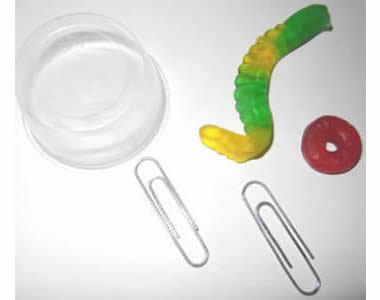Last year, I wrote an article about Setting the Tone, which mainly focused on expectation and classroom management. This year, I want to focus on the things I do the first day that are intended to get students interested in the class and excited about science.
First things first, the seating chart. For my small advanced classes, I let them sit wherever they want, but tell them that the second day, choose the seat that will be their spot for the entire semester.
At this point, they usually look around, find their friends and figure out how they want to sit to be closest to their allies. This method works great for advanced classes or older students who can handle the distraction of sitting next to their BFF. Freshman students get a little more guidance with seating, but I like to mix things up.
There are two ways I handle seating for these groups, largely it just depends on my mood that day.
Seating Charts on the First Day

Option 1: Use an overhead projector to have the seating chart displayed when they enter, and students must find their seats. This can actually take some time as students try to figure out where they are and the room diagram and usually I end up having to fix a couple of mistakes. This method eliminates the need to have students sit and then move later as you tell them where to sit.
Option 2: Requires a bit more set up, have the desks numbered in some way, then a sign on the board that tells students to sit in order based on birthdays. The first seat would go to the person born in January, the second to someone in February and so on. You can also adjust the criteria and have them arrange by height or street address number. This will take more time, but as students mill about, they will need to talk to each other to find the right arrangement. Option 2 will take longer than option 1. My school has odd times the first day, so I sometimes will do this method with a class that meets for a longer period on Day 1.
Next you will want to give a short introduction of yourself to the class, check your roster to make sure all the students are in the right place and learn how to pronounce their names. (I always add phonetic guides to my original list). At this point, depending on your school’s schedule for the first day, you might have enough time to do a small group activity. I have a few listed on “First Day Activities” and I’m always adding to that list. What you choose to do, probably will depend on how much time you have left and of course, your personal style.
Some Basic Ideas:
I like to do demonstrations on the first day, such as putting raisins in a beaker full of white soda (the raisins go up and down), and students try to guess what kind of creature is in the beaker. You can even take this a step further and call it something gross, like sewer lice, and then demonstrate how edible these creatures are. You can find other great demo ideas at Steve Spangler’s page if eating sewer lice is not to your taste.
Student scavenger hunts are also somewhat popular, but it depends on how comfortable you are with allowing the kids to get up and move around, and this might not work for larger classes or irregular room. Alternate meet and greet activities can work with small groups, such as the Listmania listed on the “First Day Activities” page.
Group exercising and problem solving tasks can also be a good ice breaker for the first day. Activities might include building a tower out of note cards and masking tape, designing a bridge out of spaghetti, or the Saving Sam activity. The main benefit of team building exercises is that you get to see how well the students work together and they get to know people in their group or at their table.

If the activities I have listed aren’t appealing, there are certainly tons of other sites with ideas for what to do for the first day, often with activities for each grade level. The important thing is to be prepared to do *something*, because letting the students just sit and visit might give them the impression that this is how class will always be.

